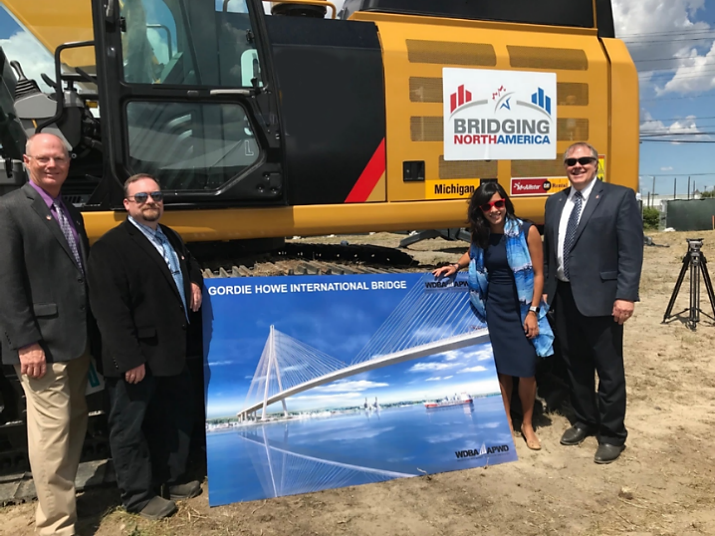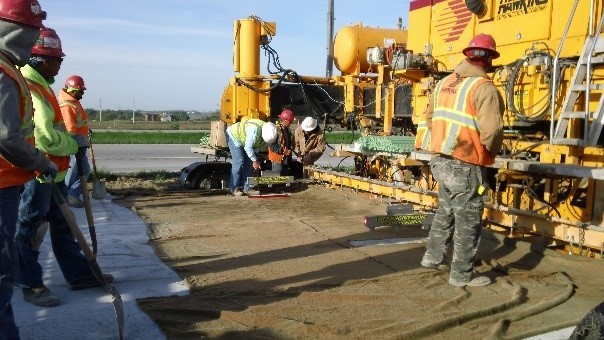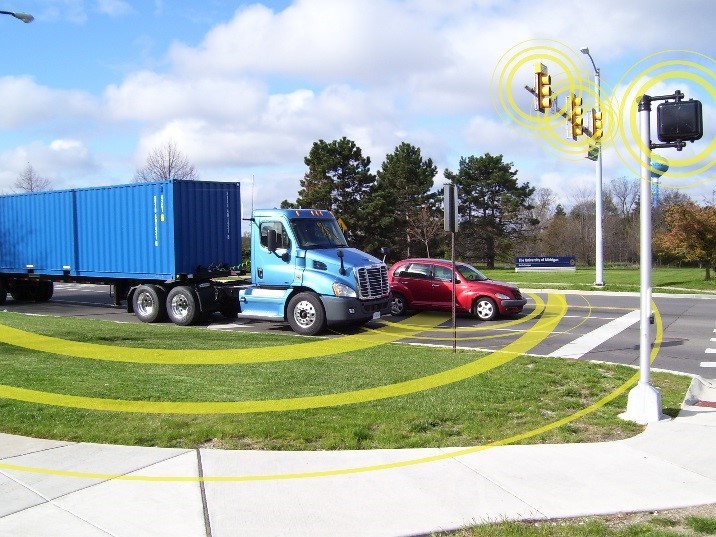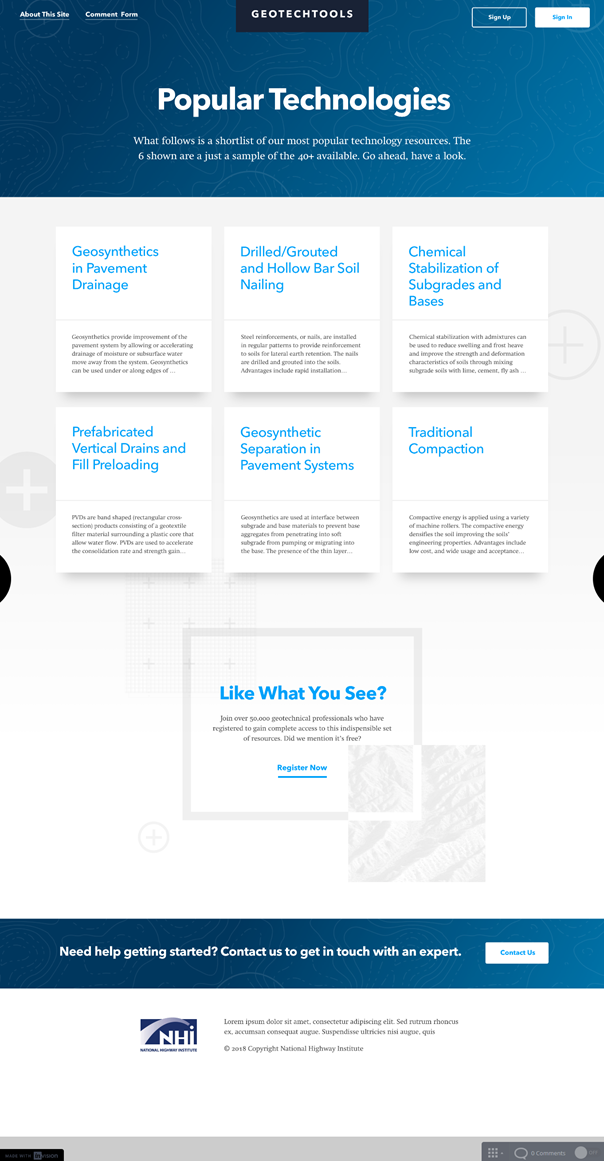SHRP2: A Legacy of Innovation and Partnership
OTS led FHWA’s involvement in the successful SHRP2 Implementation Assistance Program (IAP). A total of 63 products were deployed through seven rounds of the IAP, and many of the SHRP2 Solutions have become institutionalized within the day-to-day operations of transportation agencies across the Nation. The implementation of SHRP2 products was successful for more than the actual innovations; SHRP2 changed the way the transportation industry approaches research and deployment programs – ensuring deployment is considered and planned for during the research phase.
In 2018, the Knowledge Management unit led an assessment of the overall SHRP2 implementation program by interviewing key stakeholders from TRB, AASHTO, and FHWA, as well as State and local agencies that had implemented SHRP2 products. This evaluation identified several areas where the program employed new and unique processes that differentiated SHRP2 from traditional technology deployment programs and contributed to the overall program’s success. These contributors to success included:
-
Partnership made it happen – From the research phase through implementation, FHWA, AASHTO, and TRB collaborated on the planning and execution of the implementation program, engaging stakeholders from transportation agencies to provide input and guidance every step of the way.
-
Everyone contributed for the benefit of all – The SHRP2 IAP was funded by a unique arrangement where each State agreed to contribute a percentage of their State Planning and Research dollars. This raised $60 million, which ultimately went back to the States through the IAP’s financial and technical assistance.
-
Dedicated SHRP2 staff kept the focus – SHRP2 was the first program of its size to hire full-time employees dedicated to a single effort. Both FHWA and AASHTO hired staff for several SHRP2 roles, including technical leads for product deployment, focus area coordinators, and budget analysts.
-
Results were documented and successes shared – Extensive opportunities to share successes via product showcases, peer exchanges, webinars, and case study reports have led agencies to deploy SHRP2 products on their own.
The 2018 SHRP2 Report, A Legacy of Innovation and Partnership, illustrates how the SHRP2 experience has changed the way FHWA, AASHTO, and TRB conduct business and interact with the States and other organizations. In addition, the report showcases four State DOTs that provided real-world examples of their SHRP2 experience, highlighting the versatility and usefulness of the SHRP2 solutions and of the lasting partnerships that have been forged as a result. The report can be found here: https://www.fhwa.dot.gov/goshrp2/
Meeting Customer Needs through Deployment of SHRP2 Innovations
In 2018, the Resource Center led the final implementation of many of the SHRP2 products and worked with multiple State and local agencies to close out IAP products. At a product level, the RC also worked collaboratively with external partners to document and disseminate key findings and transferable practices of individual SHRP2 products. To achieve this, the RC helped develop and deliver national webinars, workshops, and peer exchanges and also helped develop a variety of written “lessons learned” materials for each SHRP2 product.
Improving Pavement Renewal Options
SHRP2 Renewal products include Field Spectroscopy (R06B), Infrared Imaging and Ground-Penetrating Radar (R06C), Nondestructive Testing for Identification of Delamination in Pavement (R06D), Real-time Smoothness (R06E), New Composite Pavements (R21), Pavement Renewal Solutions (R23), and Preservation for High-Volume-Traffic Roadways (R26). The ultimate goal of all of these products is to help State and local agencies improve infrastructure conditions in the most timely and cost-effective ways. The RC Pavement and Materials Team led the project management and deployment for these products. In 2018, these efforts included: sponsored monthly coordination meetings, delivering technical workshops; conducting field demonstrations and trials; and developing, informational materials and webinars, tech briefs and marketing publications.
Accelerating Bridge Construction
The SHRP2 Renewal product, Innovative Bridge Designs for Rapid Renewal (R04), was an integral part of the Accelerated Bridge Construction (ABC) package, providing standardized plans, designs, and concepts to use prefabricated elements to build and replace bridges faster. In 2018, the RC Structures Team continued to provide project management, strategic direction and technical assistance for the implementation of this product. One key effort was the development of a one-day workshop that was delivered to 31 different agencies which more than 1,200 multi-disciplined DOT staff members attended. The workshop focuses on demonstrated the SHRP2’s ABC “Toolkit” and sharing the transferable “lessons learned” from the IAP projects to a broader national audience.
Improving Transportation Program and Project Decisions through Better Freight Data and Analysis
The primary goal of the Freight Data and Modeling SHRP2 Capacity product (C20) is to improve key program and project decisions that State DOTs and MPOs make regarding freight transportation and critical infrastructure needs. To achieve this goal, the implementation for this SHRP2 product emphasized improving the public sector’s approaches to freight data and freight analysis. In 2018, the RC TPM, Asset Management and Freight Team focused on: sharing project findings and transferable practices on a broader national scale, developing tailored technical content for delivery in national webinars and conferences; training freight specialists on specific freight data sources and data integration tools designed to answer real-world transportation questions; and integrating SHRP2 lessons learned into FHWA program and emerging research. The team also worked directly with specific DOTs and MPOs that expressed strong interest in establishing behavior based freight models and innovative data approaches.
Demonstrating the Benefits of GeoTechTools for Transportation
The primary goal of the SHRP2 Renewal GeoTechTools (RO2) is to assemble all the geotechnical information needed to select, design, control quality, and specify soil improvement technologies for embankment construction, embankment widening, and pavement support into one convenient and comprehensive online system. The RC Geotechnical and Hydraulics Team, as the technical implementation leads, worked with NHI to create a new website, called GeoTechTools.org. The Website provides geotechnical construction information and technology selection guidance for project planning and development, program delivery, and improved infrastructure.
At present time, there are more than 8,200 registered users from every U.S. State, four US territories, every Canadian Province, and 104 countries. During its implementation, extensive instructor-led training (ILT) on how to utilize the site was provided to 15 grantee States. States that attended the GeoTechTools (R02) training were provided with methods for better informing decisions in project delivery to address potential risks. Users unable to attend ILT courses may not be using the tool to its capability. To bolster the success and dexterity of remote users, the RC staff are working with NHI to create a GeoTechTools Training microsite as an ILT-alternative. The microsite will function as a guided discovery tool that uses responsive decision-making techniques to walk users through the GeoTechTool’s core capabilities. Participating users will be served a series of questions that prompt them to make selections based on their project needs. Adapting to their unique demands, the tool will highlight the various features, capabilities, and resources GeoTechTools.org offers and how they can be applied to make better decisions and ultimately find better solutions for their geotechnical needs.



